
If you're a newcomer to fly fishing with hoppers, you've come to the right place. We have the knowledge and experience that'll ensure you're able to get your hopper journey started seamlessly. Incorporate our tips into your fishing approach, and not only will you know how to catch fish using the trout fly fishing method, but you'll also find that it can be a delightful and satisfying way to spend a day on the water.
Newcomers typically struggle with hoppers. To successfully catch trout using this fishing method, you must mimic the actions of grasshoppers, use high-quality hoppers, and fish when the conditions are just right -- this is typically during late summer and into early fall.
Of course, it would be wrong to say that this is the story of flying fishing with hoppers. It's absolutely not! There's much more to learn, as you'll find out below. Read on to find more valuable information about how you can use hoppers to catch plenty of trout fish.
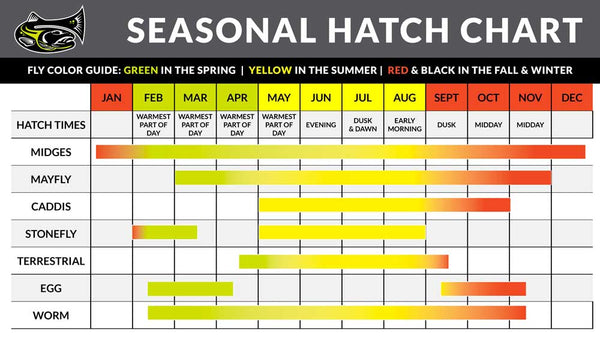
So what is the Hopper Method?
Before we can begin discussing the best way to catch fish using hoppers, we first need to understand what hoppers are. Some people will know already, but if you're a newcomer to fishing or have never been around someone using this method yourself, you may be a little confused. So what is it? Essentially, hoppers are small, man-made variations of grasshoppers.

Trout love to eat grasshoppers when they're available (which is usually around late summer). Fishing using hoppers is effectively the process of tricking the fish in the river that the manufactured hopper you're skimming along the surface of the water is a real grasshopper.
They come up for a meal, take a bite of your hopper, and then they're on the hook. From there, it'll be all about reeling them in cleanly. To put it in simple terms: hoppers are just a specific type of bait, one that works exceptionally well with trout at particular times of the year.
How to Set Up Hopper Rigs
If your hopper is going to work effectively, then it has to be attached correctly. As you'll come to learn, you'll want to be able to hit the water with some force -- and that won't be possible if your hopper has been improperly attached since you'll just lose it to the water!
Fortunately, attaching a hopper to your rod isn't complicated whatsoever. The only point you'll need to keep in mind is to make sure that there's enough tippet attached to your leader's end. From there, you'll attach your hopper to the end. Take another 24 inches of tippet (or thereabouts) and attach it to your hopper's hook.
The upper part of the leader is typically made of nylon, the lower part of the fluorocarbon tippet. The nylon will keep it bobbing on the water while the fluorocarbon will sink, though it won't be detectable to the fish. There are various types of hoppers that you could use for your rig, as we'll see below.
Also including a nymph or emerger dropper on the tail will increase your success when using hopper patterns.

Different Types of Hoppers
There's not one kind of grasshopper, and thus there's more than one kind of hopper! As with anything you can use when fishing (or doing anything in life…), there are good and bad hoppers. Remember that a critical component of fishing with hoppers is that they must mimic grasshoppers. If they're not able to do that, then the fish won't be fooled -- and that'll just leave you standing on the side, waiting for a fish that'll never bite. Let's make sure that doesn't happen!
There are two aspects that you'll want to keep in mind: the quality of the manufacturing, and the design. A good design doesn't count for all that much if the hopper has been poorly made. Similarly, a great build won't make up for the wrong pattern. If you've got some Half Chernobyls, and Fat Alberts in your kit, you'll know that you'll be on a winner when it comes to pattern.
In general, you'll find that it's best to have a few different hopper designs in your kit. You'll find that some seem to work every time they're put in the water until the success rate seems to slow down. At that point, you can just switch it out for another design.
Why Do Hoppers Work?
So why do hoppers work, anyway? It all comes to what the fish think they're getting when they rise to the surface. They're not just going for a swim to see what's going on in the neighborhood, oh no: they're on the prowl for food. And when you're a trout that's looking for a snack, you'll find that there's nothing better than seeing that a grasshopper has been blown in your direction. The trout, drawn to the free meal, come up to take a bite but only end up with your hook in their mouth.
Of course, if you're going to mimic hoppers, you'll need to be smart about it. Hoppers are found on the edges of rivers during late Summer and into fall; before then, you'll be unlikely to have much success. They work exceptionally well during August when trout are increasingly hungry, and in higher search of food. Most climates can be teeming with life (and thus food) during Spring, but once Summer begins to roll around, things start to die down a little, especially in the hotter areas.
Why You’ll Love Fly Fishing Hoppers
Even if you're a newcomer to using hoppers when you're fly fishing, if you take the time to get it right, then it won't be long before you see just how enjoyable it can be. We think there's much to love about using hoppers, from choosing which one you're going to use on any particular day, to analyzing how well it worked, and so on. Right at the top of the list of why you loved your hopper experience will be that they work! Anything that sends trout into a frenzy will always be of interest to fishers. And that's just what hoppers do.
To a trout, especially a trout trying to make it through the hot month of August, there isn't all that much better than seeing a hive of grasshopper activity on the water's surface. On some days, you'll find that if you can get the technique for hitting the water just right, then there'll be plenty of trout eager and willing to attack you.
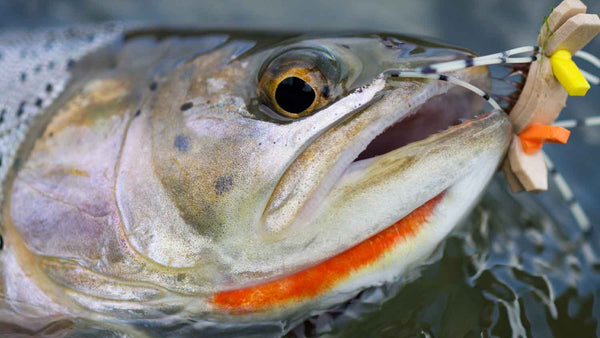
Size and Presentation of Hoppers
As anyone who has spent any time trying to catch fish will know, fish are not stupid creatures. And that all begins by using the right hoppers. The key is to find hoppers that look -- and which can be manipulated to act -- like the real thing. This is something that many newcomers to hoppers overlook; indeed, it's something that many people who have tried fishing using hoppers but given up missed too. There are plenty of different designs; as we mentioned above, it's best to have a range of options. You'll slowly figure out which ones work best and on which days.
There's also a range of sizes. As with designs, you'll need a variety in your kit. Some work on certain days and in certain conditions better than others. For example, smaller sizes may not work as well as larger ones when conditions are a little obscured since they can be challenging to see. Save them for when visibility is high. However, one thing about the size is that it's subjective: some people swear by size 12, while others prefer the agile nature of size 16.
What Gear You’ll Need for Hopper Fly Fishing
As well as the hoppers that you're using, it's also essential to think about the gear that you're using to cast the hoppers. Using a lighter weight rod will make it more difficult since you'll want to put a little force behind the casting. Why's that, you ask? Since you're trying to mimic a grasshopper, you'll need to hit your hopper on the water with a bit of force.
If the rod is too light, you may struggle to get the cast's necessary power. Make sure that you've got a sturdy rod that you can be a little more aggressive with. A 6wt or 5wt will work best, though there may be times when you want to try a 4wt.
The Right Conditions for Hopper Fly Fishing
There's a knack to finding success with your hoppers that you'll quickly appreciate: you'll want to be out there at the right times. To begin with, this means the right time of year -- hopper season runs from late Summer into Fall, since that's when grasshoppers are most active.
You can try it in January if you like, but the fish will be unlikely to be fooled! Though many fishers don't like the wind all that much, they can be beneficial when you use hoppers. That's because the wind pushes grasshoppers into the water in the first place. They're not aquatic insects, so they don't like the water -- but if the wind gets too much for them, they don't have any choice.
Trout are highly alert to the movement of grasshoppers above their heads, so you'll find success with winds. One highly underrated trick is to follow the lead of actual grasshoppers. If you're in an area where there seems to be a lot, then stay right there. After all, you are attempting to make the fish believe that you're offering a genuine grasshopper.
What better way than by blending in with the real thing? Having said, the absence of grasshoppers in the area doesn't necessarily mean that you won't succeed. People had reported great success during summers when grasshopper numbers were comparatively low -- in some cases, that may make progress even more likely.
What’s Not the Right Time for Hopper Fly Fishing?
There are some periods when it's best to leave the hopper equipment at home, and use a different method, even during "hopper season." For the hopper method to be effective, you'll want conditions to be a little chaotic. For example, the wind should be blowing, and the water should be a bit choppy.
If there's no wind, and the wind is entirely still, it's unlikely that you'll catch anything -- generally speaking, anyway. There are some instances when calm, and still, conditions will be excellent. For example, if there have been several days of perfect hopper conditions, the fish will likely still be on the lookout for grasshoppers, even if the real thing won't make it their way (fish aren't dumb, but they're not human-level smart, either).
Generally, however, you’ll want to get out there when it’s windy and choppy. These aren’t just the best conditions for hopper fishing; it can also be great fun to be out there in conditions that seem a little primal!

Choose the Right Environment for Hopper Fly Fishing
As well as the weather, you'll also need to take a look at the general environment that you're trying to fish. There are some sceneries that just aren't all that conducive to hopper fishing. It should go without saying that the water source should be a place where grasshoppers are active; this usually means rivers.
You should focus your energy on areas where the water level isn't too high and isn't too quick. For a combination of reasons, trout just don't like rising to the surface in these conditions. A regular water level, with a natural current, will be ideal. In other words: if it looks like it would be easy for a trout to swim to the top to grab a grasshopper, then it's the right place.
In some areas, you won't need to overthink it. You'll be able to find the right hopper spot without much effort. If you can see a few grasshoppers without giving it much thought, it's worth casting your rod. As with most things related to hopper fishing, sometimes you just need to "feel it out." After a few times fishing in the same area, you'll get a sense of what spots work and don't.

Tricking Trout while Hopper Fly Fishing
As with all types of fishing, hopper fishing will put you in battle with trout. If you're going to catch any, then you'll need to outsmart them. And let's remember: home advantage and experience is on their side. They're on the lookout for things that may end their life prematurely, so they're not going to walk right up to your hopper if they have any doubts that it's not a real grasshopper.
And then there's also the matter of how you present the hopper to them. One mistake that some hopper beginners make is that they're a little too gentle when it comes to casting. They just try to land the hopper on the water gently. But if you take a look at how grasshoppers function out there in the world, you'll find that this approach wouldn't look realistic.
Grasshoppers have some weight about them; they're now going to gently land on the water like a tiny fly, especially since they're not voluntarily going into the water. The wind blows them that way, so they're not going to land like a gymnast. They're going to hit the water with force.

So you should try to mimic that landing style with your rod. Use a little more force, and slap the water -- of course, don't get over the top, but similarly, don't be overly gentle either. Let the fish know that the grasshopper has arrived. It's not as you can be careless -- if you're going to have the fish believe that there's a real grasshopper there, you have to keep your line out of the water. The hopper can slap the water; the line shouldn't touch it.
There are things you can do when the hopper is in the water that'll draw the fish's attention. One method is to "vibrate" the hopper. This mimics the struggle that a real grasshopper would experience. To make the point again: grasshoppers don't want to be in the water! So when they land, they try to free themselves. An obvious error would be to drag your hopper along the water; to someone underneath, this would look like the grasshopper was going for short swims back and forth, and they're not going to do that.
After your little vibration, you can move your hopper downstream -- this will make it look like the grasshopper has died after its brief fight to cling on for life. These are just little tricks you can use if you’re not having much success. In many cases, you’ll find that you get a bite almost instantly. Indeed, the speed with which trout snap at hoppers usually takes newcomers by surprise: be ready!
Trying Different Styles of Hopper Fly Fishing
There are no guarantees in life, and that includes when it comes to trout fly fishing with hoppers. There’ll be times when conditions seem perfect, yet you fail to catch anything. And then there’ll be times when you think you’re never going to catch anything, yet end up with plenty of fish. You can’t predict how it’s going to go.
However, it's essential to keep in mind that there'll always be things you can do if you're having as much success as possible. It's all about mixing things up. If you find that no fish is biting, then take a break. In many cases, it's not that the entire day has terrible conditions for hopper fishing; it's just that the hour that you're trying isn't quite right. Mornings can be more complicated than the afternoons because the day hasn't quite warmed up yet. So you could realistically find that waiting a few hours can make all the difference.
If you've got a few different designs in your kit, then try a different one. One of the magical (and sometimes annoying) things about hopper fishing is that it isn't a science. You'll find that some things work well when they shouldn't, and some things don't work when they should. But this is just part of the journey: catching fish is so much more enjoyable when it feels like you've worked for it!
What Problems Do People Face Hopper Fly Fishing?
We've talked a lot about some of the things you can do that'll help you to catch fish. But we should also talk about the things that you shouldn't do. There are plenty of common mistakes people make that make catching fish more difficult.
You'll find it much easier to succeed if you have at least some knowledge of the grasshoppers in the area (specifically how big they are); this will help you to pick the right size hopper. You won't want to use a small size if the grasshoppers in the area are monsters! Don't go out too early or late in the day, either. Primetime will be from around midday through to 4 pm (be sure to bring sunblock!).

Get Experimental with your Hopper Fly Fishing
There are some rules that you should follow when it comes to fly fishing with hoppers. For example, you should invest in high-quality hoppers, and learn how to hit the water realistically. But beyond that? It's up to you. If you know the river that you're fishing well, then make the most of your knowledge. Are there any ways you can think of that would give you an advantage over the fish? Do you know the spots where the wind hits the water at just the right speed? Your knowledge can help you a lot, as can experimentation. Ultimately, the worst that can happen from your experiments is that you fail to catch any fish.
And yet, it might lead to great success. One of the fun things about fishing is that there aren't too many hard and fast rules: if you can come with an ingenious way to bring more fish your way, go for it. Getting creative will also help you to stick with it, too. It's always a little disheartening to spend time on the water and not catch anything. Playing around with your approach will help to keep things interesting, and may just work!
Most of All: Enjoy It!
The thing about fishing with hoppers is that, while there are rules you can follow, it's also about feeling. While you might have some difficulty in the beginning, over time, you'll come to develop your style. You'll figure out what works for you and what doesn't. This is one of the best aspects of using hoppers: everyone has their own opinion, and everyone finds their route towards success in their way. If you're a newcomer, then look at giving it a try, without pressure. You can take your hopper kit out with you when you're doing other types of fishing, and see how you get on. As with all things related to fishing, it's all about having fun!

Conclusion
So what have we learned? A few things, hopefully. We've taken a look at what hoppers are why they can be beneficial to use, and we've always investigated the right and wrong ways to go about using them -- for example, the right time of year to try and how to cast. If you haven't thought about using hoppers before, this upcoming hopper season could be the perfect time to give it a try.
Look at investing in your hopper fishing supplies now, and you'll be all ready to hit the water when late summer rolls around. Give it a try, and you might just learn what many other people already know: that fishing with hoppers can be great fun and highly rewarding!
Perhaps the critical consideration for succeeding at this new type of fishing will be to ensure you have high-quality hoppers. You'll hopefully have enough experience on the water to know that fish are not dumb creatures; if they see something that is not a grasshopper (or one that they'd ever see in their neck of their woods), then they're not going to rush to it with their mouths open. The same goes for if they can see a line. As ever, if you treat the fish you're trying to catch with respect, then you'll be on the right track.
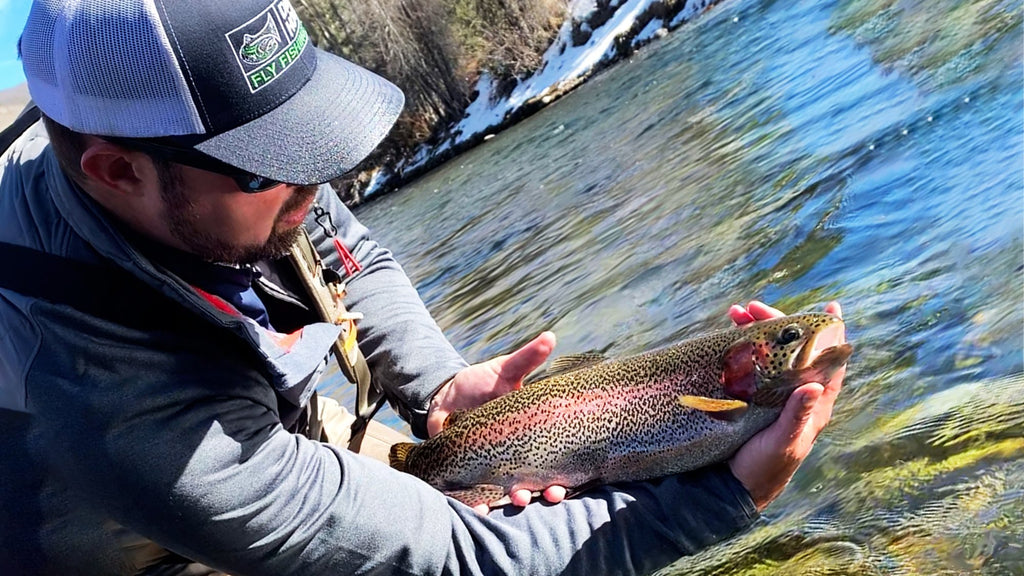
About the Author
Matthew Bernhardt, a third-generation Coloradan, grew up at the forefront of the state’s fly-fishing revolution, enjoying time on the water, side by side with experienced guides and lifelong anglers.
By combining his passion for fly-fishing with input from other experienced fly-fishers and guides and his fine arts degree from Colorado State University, Matthew spent five years carefully developing the Drifthook Fly Fishing System, built to help every angler catch more trout.
When he’s not spending time with his wonderful family, you’ll find him out on the water catching MONSTER trout, and he anxiously looks forward to the day when his kids are old enough to join him there.

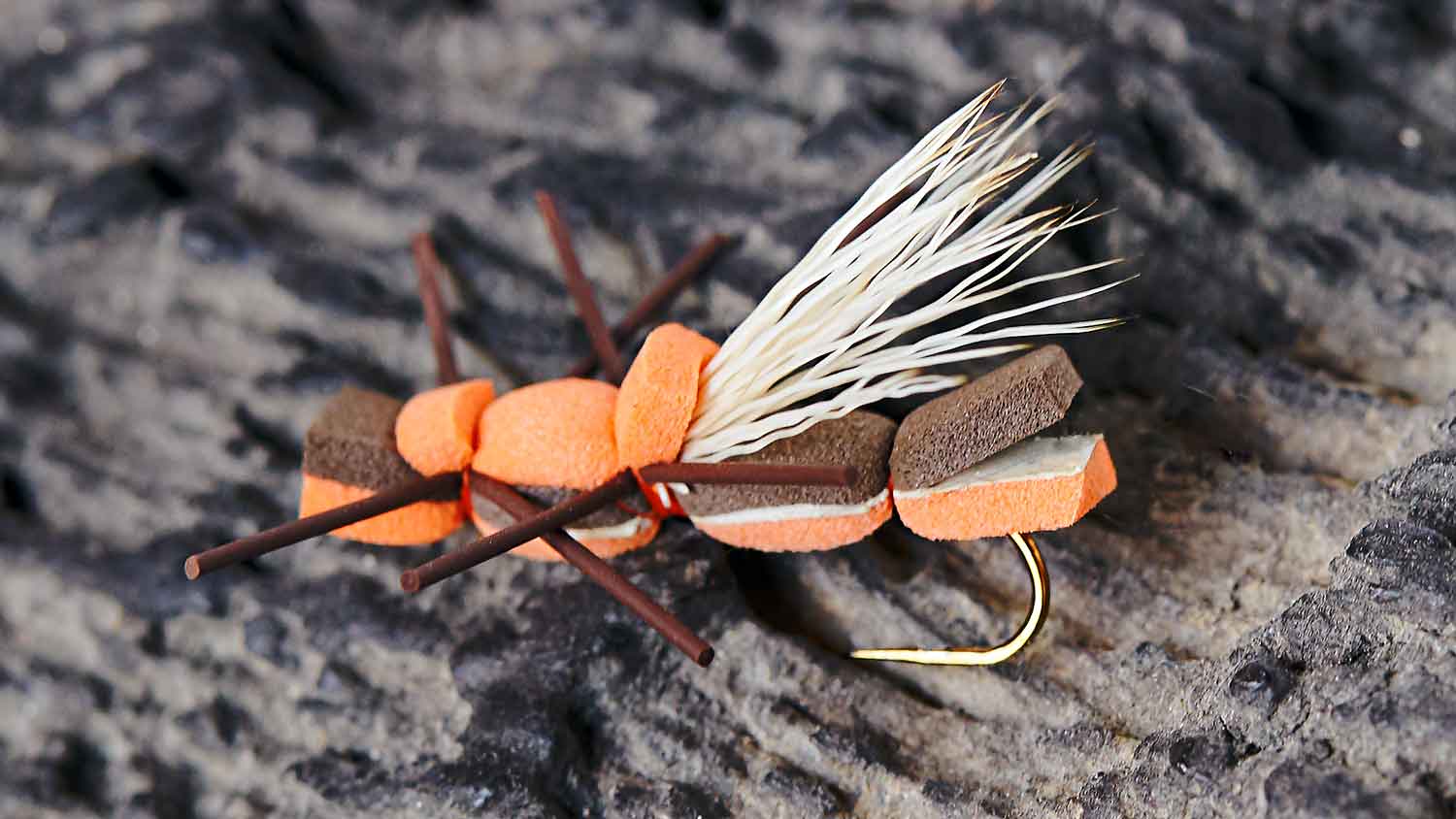





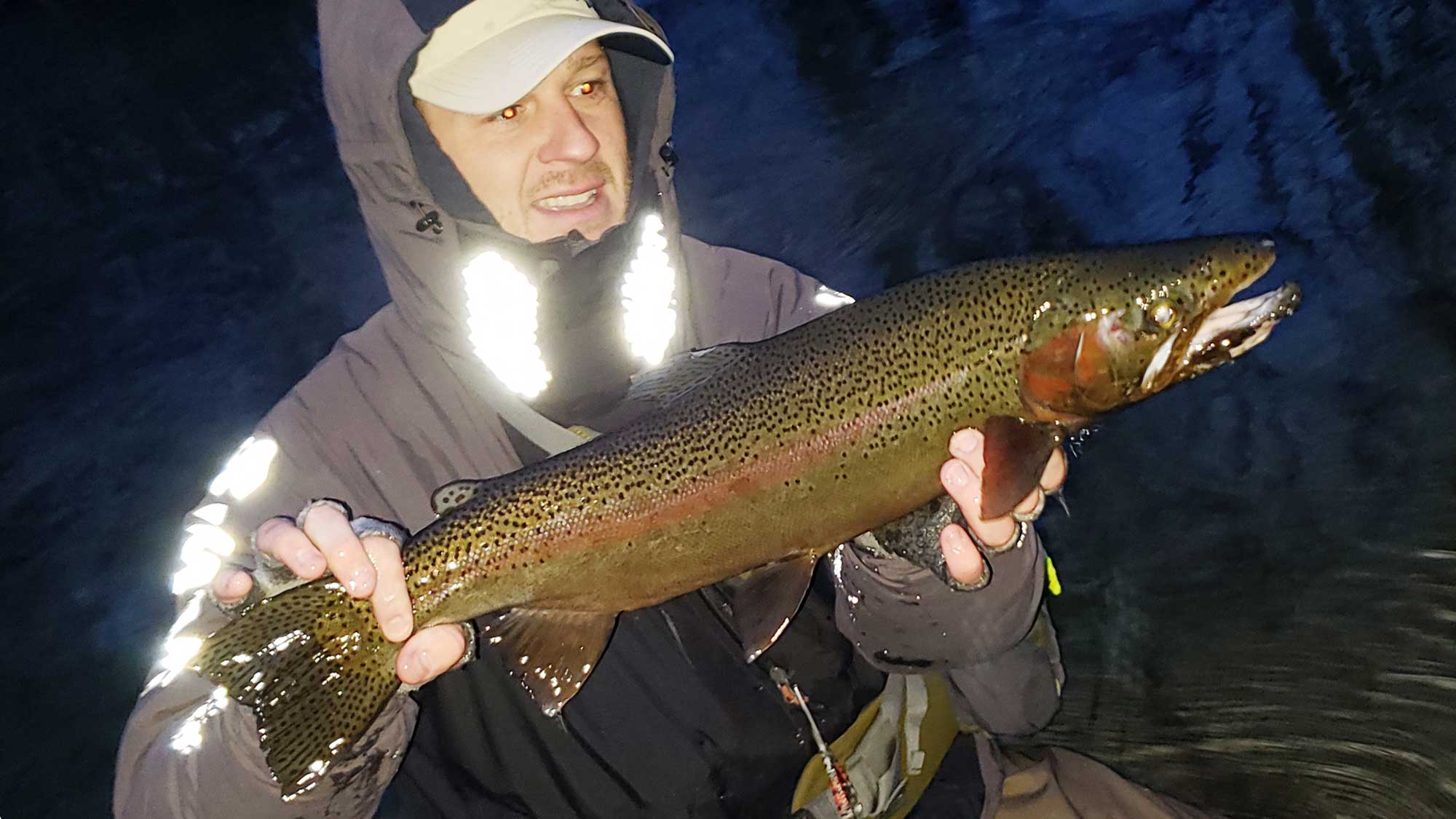

2 comments
james helring
got into hoppers on the Bighorn last year in July and it was a blast you must slap it down on the water and a few vibrations or twitches.Trout blow up on them
got into hoppers on the Bighorn last year in July and it was a blast you must slap it down on the water and a few vibrations or twitches.Trout blow up on them
JOe LAughlin
I first took my girls to Colorado n New Mexico in the early 80s, they fell in love with fishing(any kind)! Being raised in the west Texas oilfield, fishing was, n still is a treat for them! Now they have infected the grandsons with the virus!
I first took my girls to Colorado n New Mexico in the early 80s, they fell in love with fishing(any kind)! Being raised in the west Texas oilfield, fishing was, n still is a treat for them! Now they have infected the grandsons with the virus!